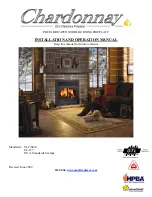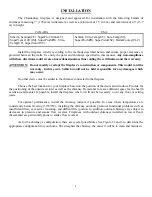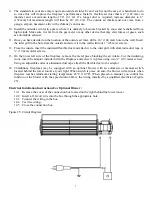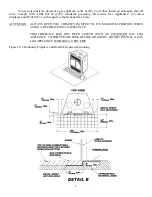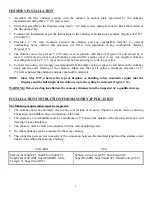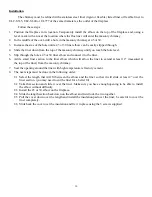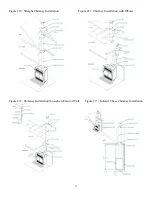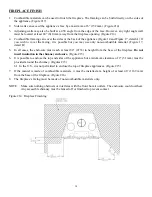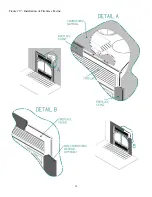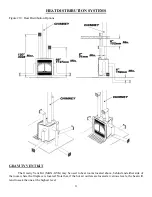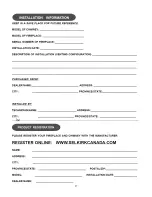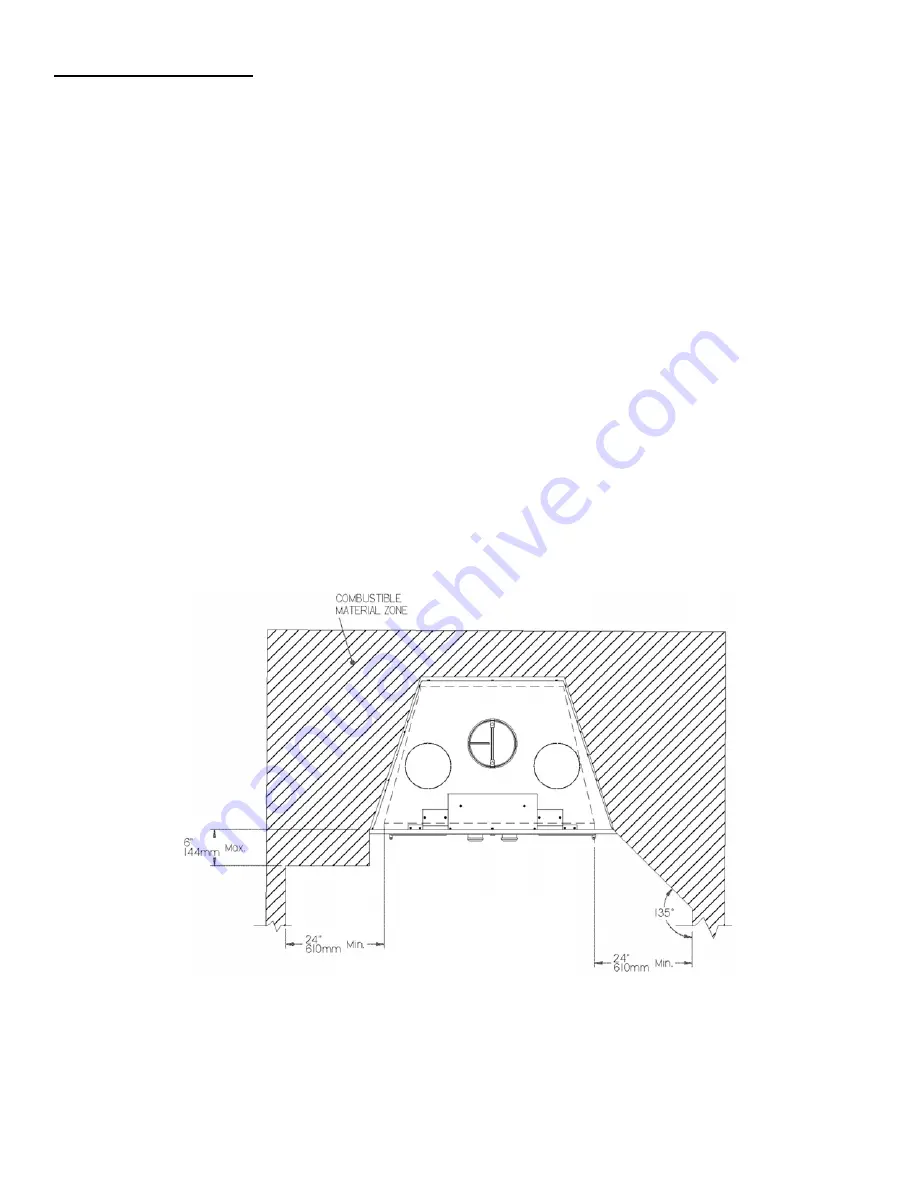
14
FIREPLACE FINISH
1. Combustible materials can be used to finish the fireplace. The framing can be built directly on the sides of
the appliance. (Figure #17)
2. Side walls can exceed the appliance’s face by a maximum of 6” (152 mm). (Figure #14)
3. Adjoining walls may also be built at a 458 angle from the edge of the face. However, any right angle wall
must be located at least 24” (610 mm) away from the fireplace opening. (Figure #14)
4. Combustible framing can cover the sides or the back of the appliance (Figure 14 and Figure 17, detail A). If
you wish to cover the facing, it is possible but you may use only non-combustible material. (Figure 17,
detail B)
5. In all cases, the enclosure must reach at least 84” (2133) in height from the base of the fireplace.
Do not
insert insulation in the chimney enclosure.
(Figure #15)
6. It is possible to enclose the top and sides of the appliance but a minimum clearance of 2” (51 mm) must be
provided around the chimney. (Figures #15)
6.1 In the U.S., it is not permitted to enclose the top of fireplace appliances. (Figure #15)
7. If the mantel is made of combustible materials, it must be installed at a height of at least 46” (1169 mm)
from the base of the fireplace. (Figure #16)
8. The fireplace’s facing must be made of non-combustible materials only.
NOTE: Make sure nothing obstructs or interferes with the front hot air outlets. The enclosure could overheat.
Any accessible chimney must be fenced off or finished to prevent contact.
Figure #14: Fireplace Finishing
Summary of Contents for Chardonnay
Page 11: ...11 Figure 7 Minimum Chimney Height...
Page 12: ...12 Figure 8 Masonry Chimney Installation...
Page 15: ...15 Figure 15 Chimney Enclosure Chimney enclosure USA and Canada Chimney enclosure Canada only...
Page 16: ...16 Figure 16a Mantel Positioning...
Page 17: ...17 Figure 16b Combustible materials positioning A 48 in B Radius of 84 in C 84 in Min...
Page 18: ...18 Figure 17 Installation of Fireplace Facing...
Page 26: ...26...
Page 27: ...27...
Page 28: ...28...

